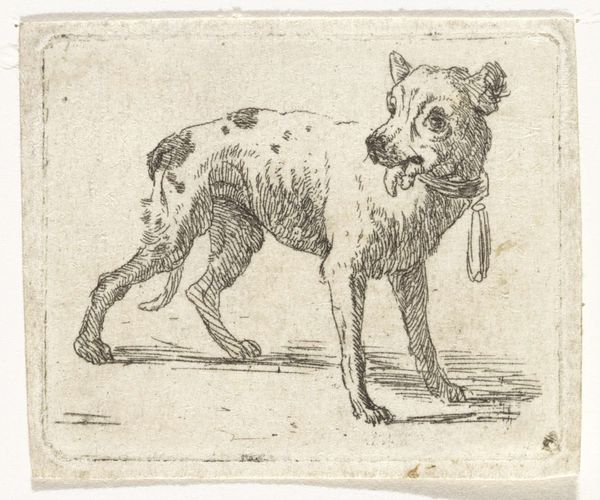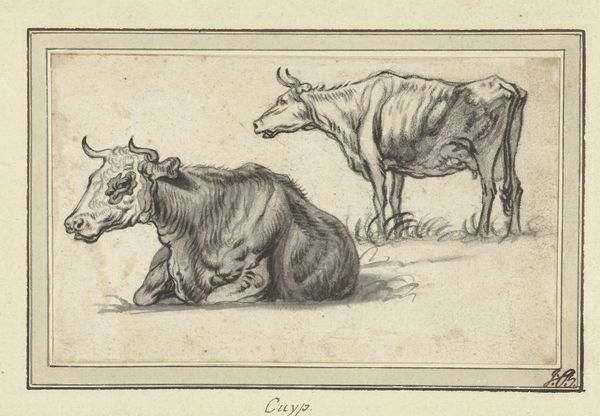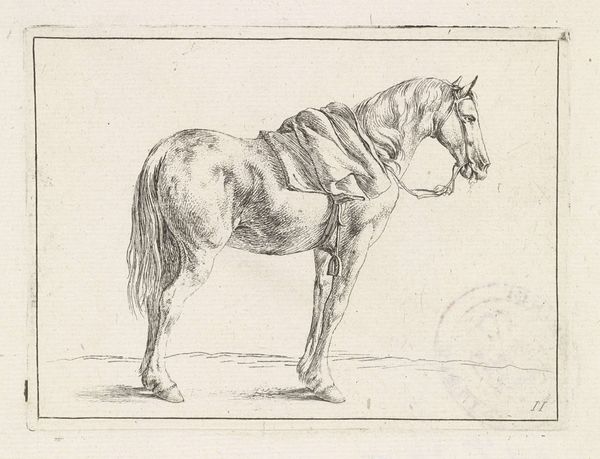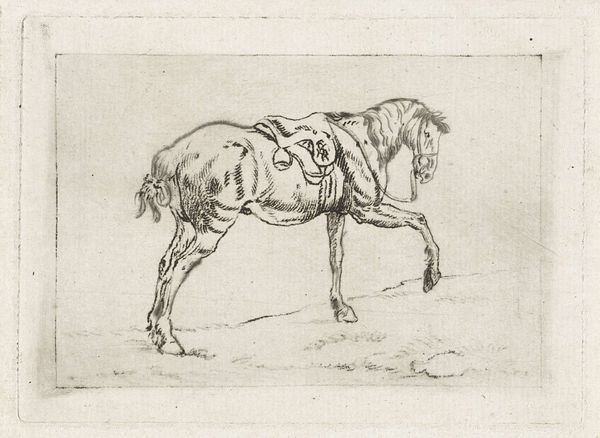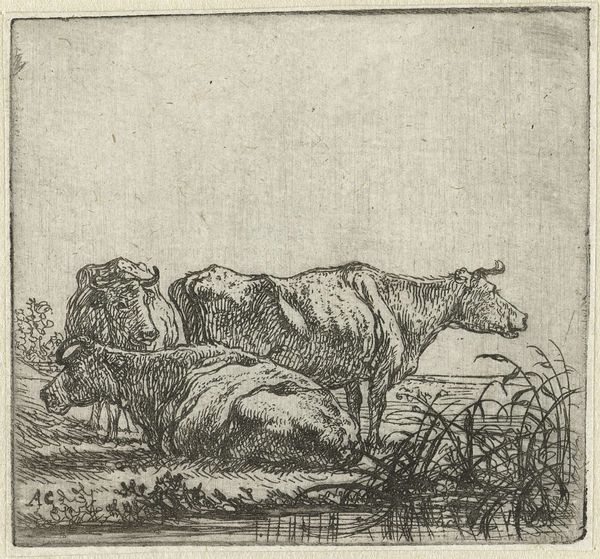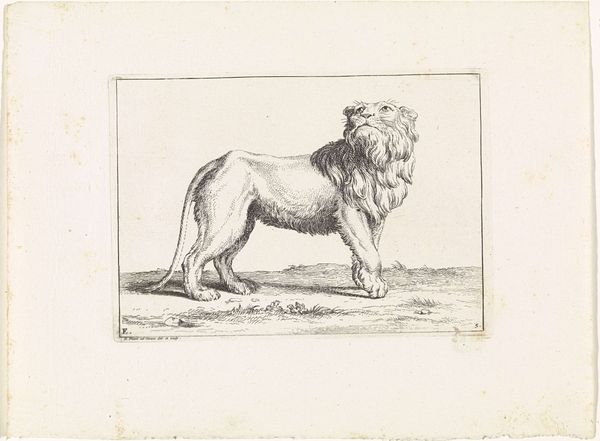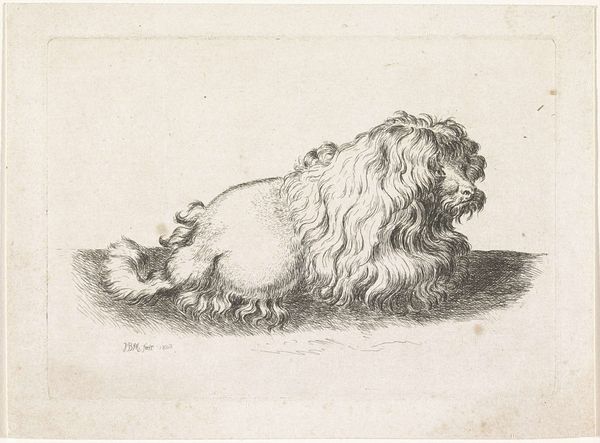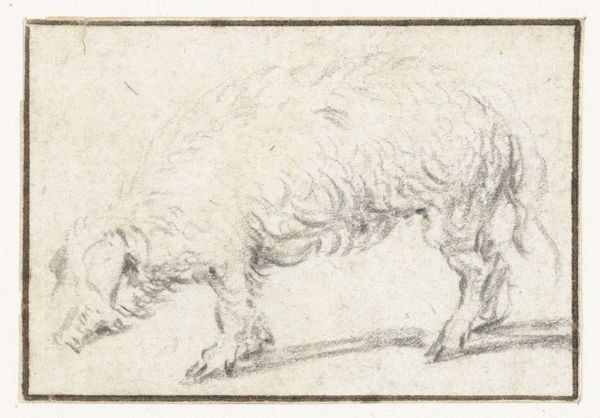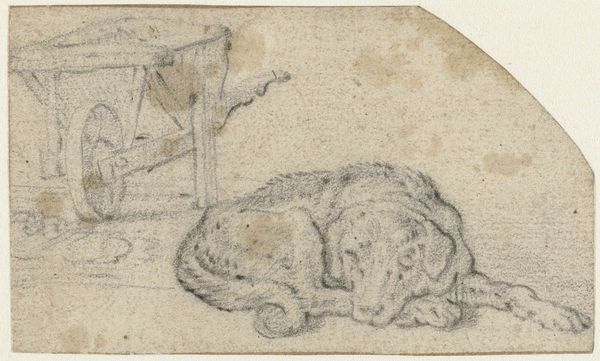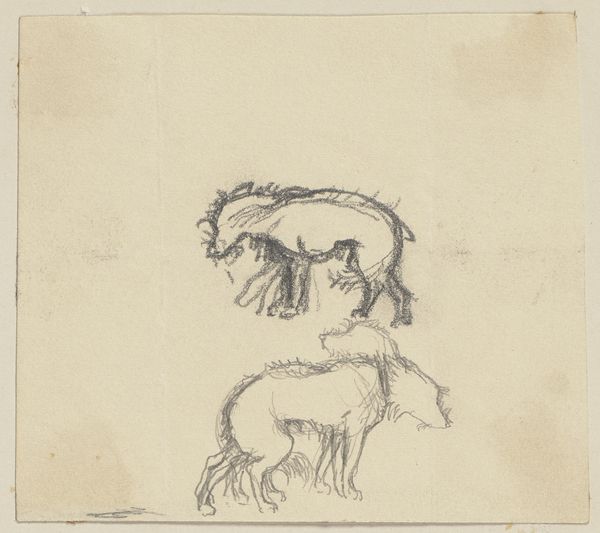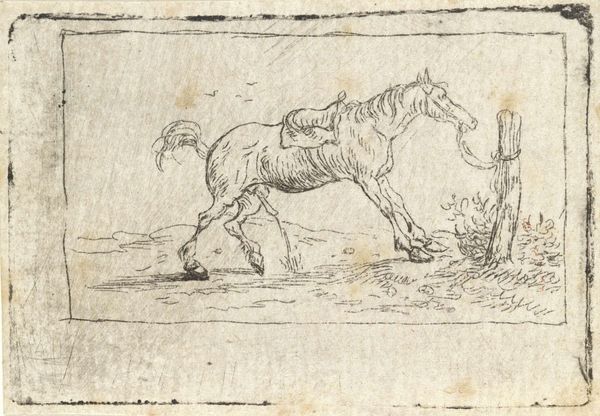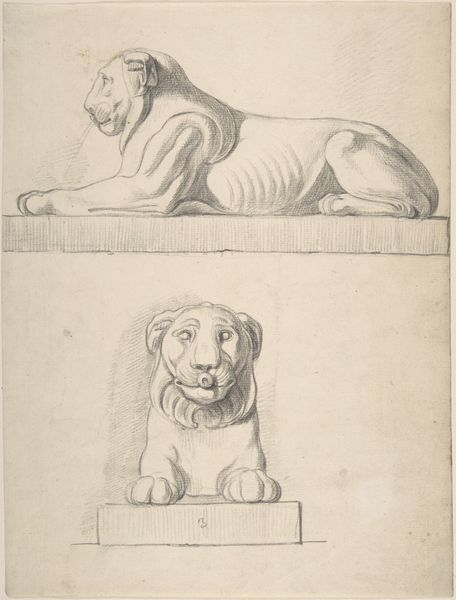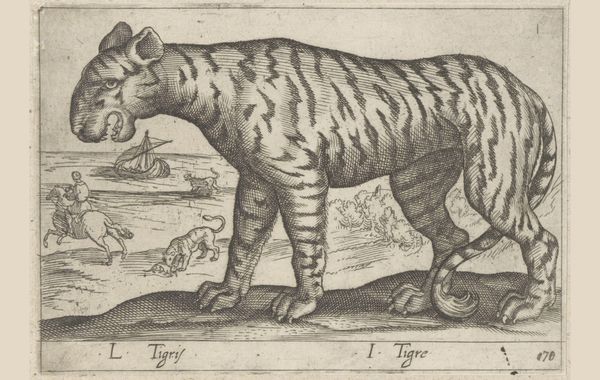
drawing, paper, ink
#
drawing
#
animal
#
dutch-golden-age
#
pencil sketch
#
paper
#
ink
#
genre-painting
Dimensions: height 98 mm, width 106 mm
Copyright: Rijks Museum: Open Domain
Curator: Here at the Rijksmuseum, we have a charming, seemingly simple work by Harmen ter Borch, dating possibly to 1649, titled “Hond ruikend aan een andere hond,” or “Dog Smelling Another Dog." It's an ink drawing on paper, a genre scene rendered with economical lines. What's your immediate response to this drawing? Editor: The warmth of the reddish-brown ink immediately draws me in. There's an earthy, almost intimate feel to this canine encounter, and I feel like I have witnessed this same interaction countless times between my own dogs. Curator: Indeed, the mundane quality strikes me as important. In the context of the 17th century, animal representation often carried symbolic weight related to hunting, fidelity, status. Ter Borch reduces the dog to simply…dog, relating to another of its kind. There's a raw honesty, free from human projection. The almost harsh angularity feels like a deliberate choice in that regard. Editor: And think about dogs sniffing each other; for them, it's a key ritual. An assertion of social place, a marker of identity—all packed into this little encounter. The fact that ter Borch gives us this glimpse—not some heroic or symbolic image of the animal, but a moment of pure canine communication—speaks volumes. He's acknowledging a hidden language, a social world existing parallel to our own. The tail almost looks like a plume, doesn't it? Signaling a distinct social status. Curator: I see your point about parallel social worlds. During this period in Dutch art we see an emergence of genre paintings depicting everyday life and people of lower status; "Dog Smelling Another Dog" fits neatly within that narrative. And as such we are forced to question, who is valued in Dutch society? Whose narratives are being captured? Editor: Yes, the choice to center this particular interaction holds significant meaning in its time. Dogs themselves become allegories; emblems of societal attitudes, loyalty, servitude, class and even anxieties. The material—ink on paper—adds to the unpretentious effect. There's no grand oil painting to intimidate, just a sketch that pulls you into a quiet observation. Curator: Exactly. It invites us to question the structures of power and how they inform what we choose to memorialize as a society, and I am very glad that we have taken the time to highlight the work. Editor: Me too. It's fascinating how much symbolism and social commentary can be contained in a seemingly simple depiction of something so familiar. It certainly opens our eyes and other senses.
Comments
No comments
Be the first to comment and join the conversation on the ultimate creative platform.
